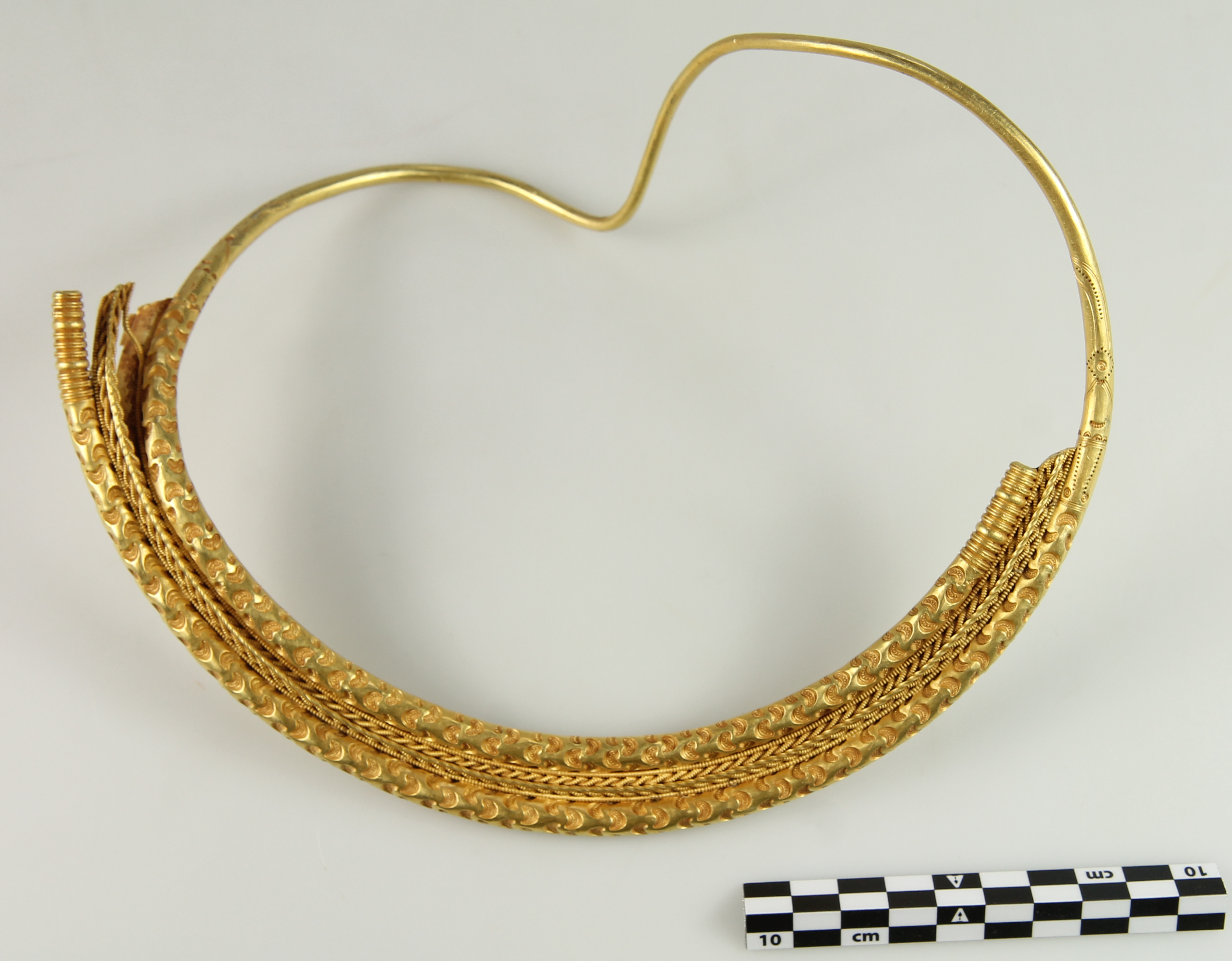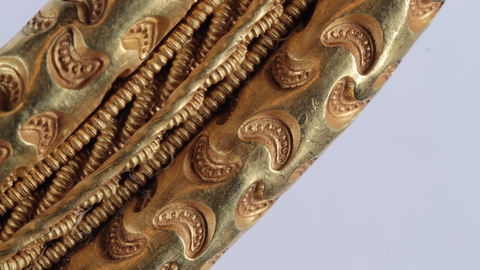



Detectorist discovers unique gold necklace, heralds discovery of Iron Age settlement
Categories: Nálezy nejenom s detektorem ve Skandinávii
At Ilsted in southern Denmark, a neckcloth dating from 400 - 550 AD was discovered with the help of a metal detector. It was found by an archaeological associate of the Museum of Southwest Jutland. He immediately contacted the archaeologists who, in cooperation with other detectorists, examined the entire field. They discovered a settlement with long Scandinavian houses from the late Iron Age.
The necklace is made of a single piece of gold in the shape of a bar, which is folded at the ends into a ring. The ends overlap at about 1/3 of the length and are joined by gold leaf. It weighs 446 grams in total, the diameter of the jewel is 21 cm at its widest point. The overlapping ends are decorated with sickle-shaped hammering. The decoration is very carefully crafted. The gold plate is decorated at the bottom with six ribbed gold threads that are double braided. A spirally twisted gold wire winds through the centre.
Only ten similar gold neckpieces with woven decoration have been found in the whole of Denmark. This is by far the most elaborate and best decorated and crafted of them. It is the only one with a soldered plate with intricate gold thread decoration.
The necklace was discovered in October 2021 in a field near Esbjerg by detectorist and commissioned collaborator Dan Christensen. In the first week after the discovery, the entire field was preemptively explored by other detectorists under the supervision of archaeologistsin case the jewel was part of a larger grouping of rare objects scattered by agricultural activity. Previous similar finds from this period have always been found in pairs. However, no other necklace has been discovered.
However, a comprehensive survey of the site revealed traces of occupation beneath a weaker layer of arable soil, including postholes for three-bay longhouses dating from AD 300 to 600. It was inside one of the longhouses that the necklace was discovered. It was removed from a layer outside the topsoil where the plough could no longer reach, so archaeologists assume that it was deposited right where it was found.
This context is highly unusual for Danish gold necklaces, as most have been found in wetlands where they were once deposited as votive offerings to the gods. The site is located on a promontory surrounded on three sides by peat bogs. The fact that this necklace was deposited inside the longhouse when the wetlands were accessible only a few steps in all directions suggests that it was hidden on purpose. Perhaps during a time of imminent danger or unrest. Either way, the owner never retrieved it.
Until the end of the year, it will be on display at the Museet Ribes Vikinger (Ribes Museum Vikingers) in Ribe, Denmark's oldest town, where, in addition to seeingmedieval royal castle, you can also find a monument to Queen Dagmar of Denmark, daughter of Premysl Otakar I.
Roman Němec
Sources: cphpost.dk, thehistoryblog.com



The article is included in categories:







